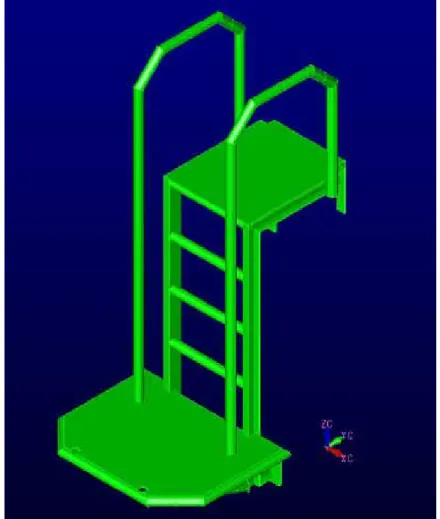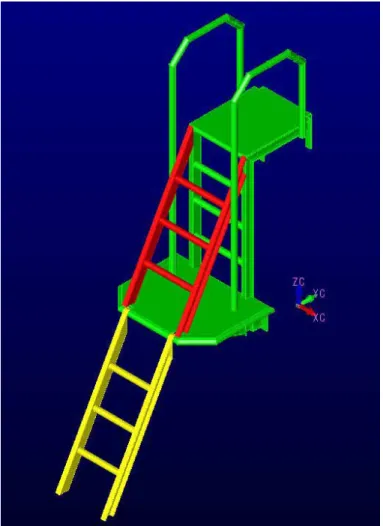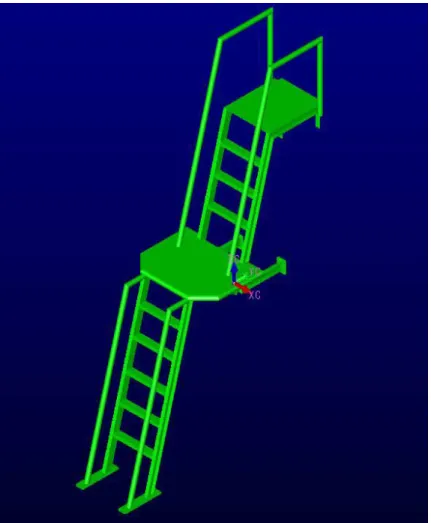Publisher’s version / Version de l'éditeur:
Vous avez des questions? Nous pouvons vous aider. Pour communiquer directement avec un auteur, consultez la première page de la revue dans laquelle son article a été publié afin de trouver ses coordonnées. Si vous n’arrivez pas à les repérer, communiquez avec nous à PublicationsArchive-ArchivesPublications@nrc-cnrc.gc.ca.
Questions? Contact the NRC Publications Archive team at
PublicationsArchive-ArchivesPublications@nrc-cnrc.gc.ca. If you wish to email the authors directly, please see the first page of the publication for their contact information.
https://publications-cnrc.canada.ca/fra/droits
L’accès à ce site Web et l’utilisation de son contenu sont assujettis aux conditions présentées dans le site LISEZ CES CONDITIONS ATTENTIVEMENT AVANT D’UTILISER CE SITE WEB.
Student Report (National Research Council of Canada. Institute for Ocean Technology); no. SR-2006-24, 2006
READ THESE TERMS AND CONDITIONS CAREFULLY BEFORE USING THIS WEBSITE.
https://nrc-publications.canada.ca/eng/copyright
NRC Publications Archive Record / Notice des Archives des publications du CNRC : https://nrc-publications.canada.ca/eng/view/object/?id=eb3ba4b8-735c-4fa7-95eb-81d826896af2 https://publications-cnrc.canada.ca/fra/voir/objet/?id=eb3ba4b8-735c-4fa7-95eb-81d826896af2
NRC Publications Archive
Archives des publications du CNRC
For the publisher’s version, please access the DOI link below./ Pour consulter la version de l’éditeur, utilisez le lien DOI ci-dessous.
https://doi.org/10.4224/8895237
Access and use of this website and the material on it are subject to the Terms and Conditions set forth at
Ice tank dive ladder
Institute for Ocean Technology
Report Management Form
Report Title
Ice Tank Dive Ladder
Report Number
SR-2006-24
Date of Submission
August 18, 2006
Security Classification Distribution
External Publication? Yes No If yes,
refereed non-refereed invited If conference, proceedings published?
Yes No
Workspace/File Name No. of copies to be printed:
Approvals:
Lead Author Date
Author Date
Group Leader Date
Director, R&D Date
DOCUMENTATION PAGE
REPORT NUMBER
SR-2006-24
NRC REPORT NUMBER DATE
August 18, 2006
REPORT SECURITY CLASSIFICATION DISTRIBUTION
TITLE
Ice Tank Dive Ladder
AUTHOR(S)
G. Parr
CORPORATE AUTHOR(S)/PERFORMING AGENCY(S)
PUBLICATION
SPONSORING AGENCY(S)
IOT
IMD PROJECT NUMBER NRC FILE NUMBER
KEY WORDS
Ice Tank, Ladder, Dive
PAGES FIGS. TABLES
SUMMARY
This report discusses the objective, criteria, and design of a new dive ladder for the Ice Tank. Redesign should allow divers easier exit from the tank and should eliminate the need for a second ladder occupying valuable space.
ADDRESS National Research Council
Institute for Ocean Technology Arctic Avenue, P. O. Box 12093 St. John's, NL A1B 3T5
National Research Council Conseil national de recherches Canada Canada Institute for Ocean Institut des technologies Technology océaniques
ICE TANK DIVE LADDER
SR-2006-24
Grant Parr
Table Of Contents 1.0 – Introduction ...2 2.0 – Design ...3 3.0 – Components...5 4.0 – Conclusion ...6 5.0 - Figures ...7 6.0 – Appendices ...10 1
1.0 – Introduction
This project is a response to issues raised by the staff of the IOT ice tank. Currently two ladders are used in the ice tank. The first ladder is the dive ladder and has a diving platform about 4 feet below the top of the tank. This is used primarily for performing dives in the ice tank. The second ladder is a standard extension ladder that is used to access the bottom of the tank when the water has been drained. A secondary use of the extension ladder is to assist divers in bringing weights from the bottom of the tank to the surface.
The main problems with the current ladders are that they occupy too much lateral space at the end of the tank, and that it is very hard to exit the water using a vertical ladder when the ice tank carriage is overhead and thus limiting head room.
2.0 – Design
At first it was suggested that the existing dive ladder, shown in Figure 1, be modified so that a ladder at an angle of 30 degrees could be used to exit the tank. Additionally, a removable ladder section would be added to the bottom of the existing dive ladder to extend to the bottom of the tank. This would eliminate the need for the second ladder, and thus require less space along the back end of the tank. The inclined ladder and extra lower ladder that were proposed can be seen in Figure 2.
The disadvantage of modifying and adding to the current ladder in such a way is that the dive platform, the area in which divers stand while preparing to enter and exit the tank, would be eliminated. This was unacceptable and as a result it was proposed that a new idea be considered.
It was proposed that a new ladder be created from scratch. The new ladder would incorporate all the features required including an inclined ladder that extends all the way to the floor of the ice tank, a dive platform, handrails and stairs that are within the requirements of the building code. The new ladder is based on the one currently installed in the Offshore Engineering Basin (OEB). Figure 3 shows a conceptual CAD drawing of this new design.
The inclination angle of the concept is 15 degrees. This should be sufficient to allow easier use for divers and also eliminate the problem of using up excess floor space in the ice tank. The ladder in the OEB is built at a similar angle.
The handrails are laid out in such a fashion as to not interfere with the dive platform. The platform remains a large and flat area that divers can stand on while preparing to dive.
The old dive ladder incorporated round foot channels. This can be uncomfortable to a diver’s foot and as a result the new ladder will use flat channels similar to those in the OEB. The stairs are spaced vertically at a distance of 12 inches within a tolerance of 1 inch.
It has been assumed that the depth of the tank is exactly 10 feet for the concept. A more precise measurement is needed before final construction.
The existing ice tank ladder uses stand-offs to help hold it in place as well as members that hold it to the lip of the ice tank. Similarly, the new ladder will use stand-offs to increase stability although the stand-offs will be longer in order to account for the inclination of the ladder.
3.0 – Components
The following is an estimate of the required components for the ice tank ladder. Material for all components is 6061-T6 Aluminium.
3" x 1.5" x 1/4" thickness channel - 44 feet 2" round tube 1/4" walls - 37 feet
1/4" sheet - 13 sq feet 2" L angle 1/4" thick - 4 feet 1.5" round tube 1/4" walls - 4 feet
4.0 – Conclusion
This document has presented the objective, criteria, and conceptual design of a new dive ladder for the ice tank. A list of estimated materials is included as well as a dimensioned drawing in Appendix A.
5.0 – Figures
Figure 1: Existing Ice Tank Ladder
Figure 2: Modified Existing Ladder
Figure 3: New Ladder Concept
6.0 – Appendice
Appendix A


